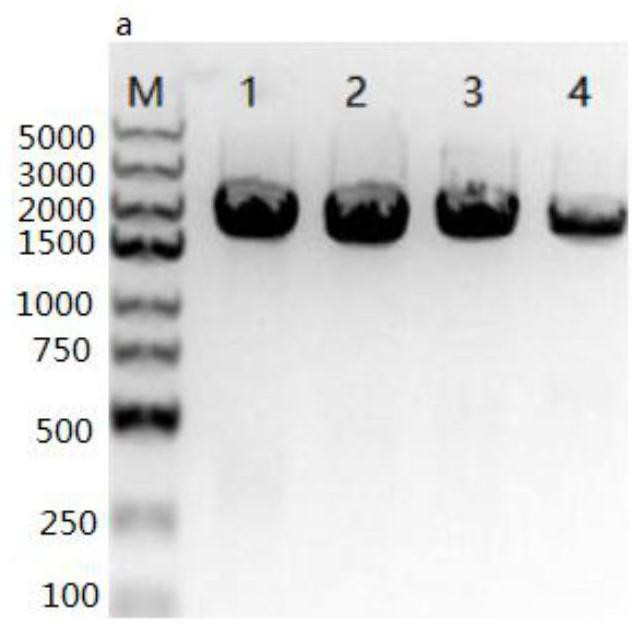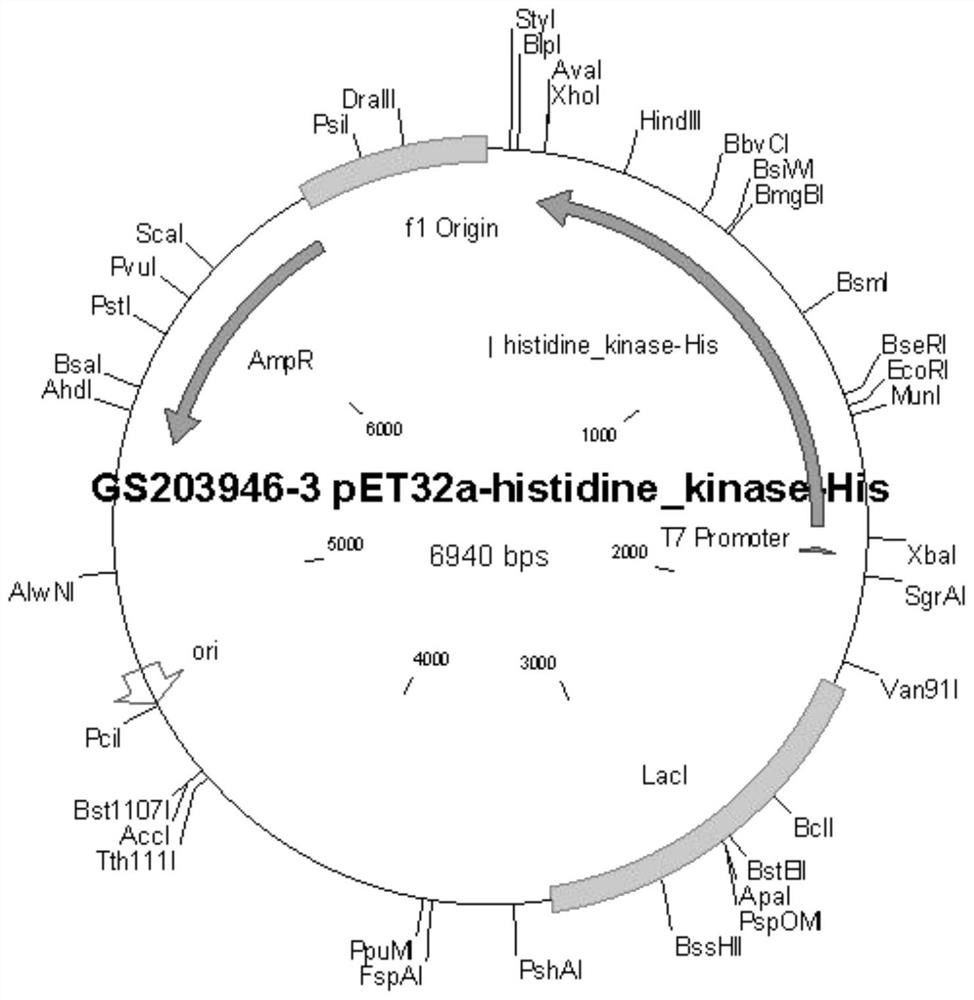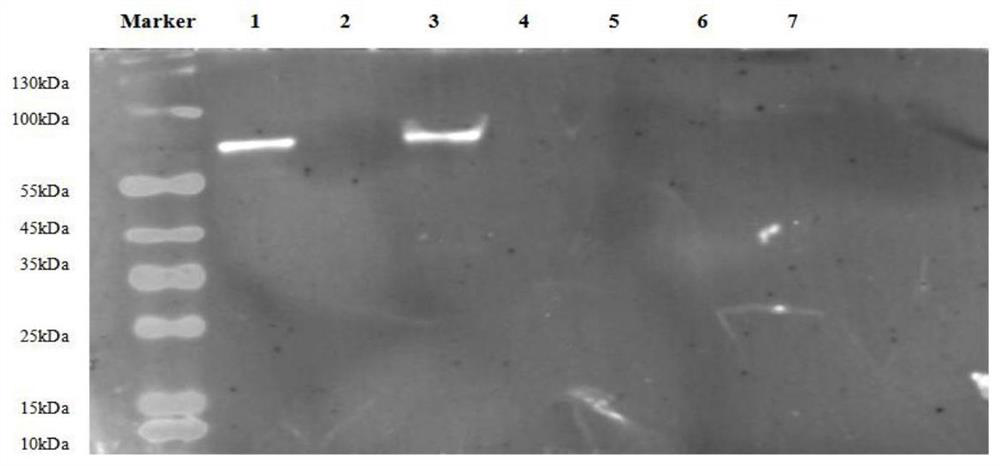A recombinant vector for assisting hydrogen production, a recombinant strain and its construction method and application
A technology of recombinant strains and recombinant vectors, which is applied in the field of genetic engineering, can solve problems such as differences in hydrogen production efficiency, low hydrogen gas, and inability to meet human needs for clean energy, and achieve the effect of improving hydrogen production efficiency
- Summary
- Abstract
- Description
- Claims
- Application Information
AI Technical Summary
Problems solved by technology
Method used
Image
Examples
Embodiment 1
[0047] (1) Search for the homologous gene sequence of the Bacillus cereus FHL system transcription protein FhlA on NCBI, and then combine the pET32a plasmid sequence, and use DNAMAN software to design the FHL system transcription protein FhlA encoding gene with the vector homologous sequence primers. The designed primers were handed over to Sangon Bioengineering (Shanghai) Co., Ltd. for primer synthesis.
[0048] The designed primers are:
[0049] Forward-Primer:
[0050] AACTTTAAGAAGGAGATATA CATATG TTTCGAGATAATCGTACAAAT
[0051] Reverse-Primer:
[0052] CAGCCGGATCTCAGTGGTGGTGGTGGTGGTG CTCGAG TAATGGTACATTTACTTTTAC
[0053] (2) According to the designed primers, the fhlA gene fragment was amplified by PCR technique. PCR amplification program: denaturation at 94°C for 15s, annealing at 60°C for 10s, extension at 68°C for 2min, 30 cycles; PCR amplification system: 25μL 2×HiFi-PCRMaster, 20μL ddH 2 O, 1 μL DNA template, 2 μL upstream primer (10 μmol / L), 2 μL downstream p...
PUM
| Property | Measurement | Unit |
|---|---|---|
| molecular weight | aaaaa | aaaaa |
Abstract
Description
Claims
Application Information
 Login to View More
Login to View More - R&D
- Intellectual Property
- Life Sciences
- Materials
- Tech Scout
- Unparalleled Data Quality
- Higher Quality Content
- 60% Fewer Hallucinations
Browse by: Latest US Patents, China's latest patents, Technical Efficacy Thesaurus, Application Domain, Technology Topic, Popular Technical Reports.
© 2025 PatSnap. All rights reserved.Legal|Privacy policy|Modern Slavery Act Transparency Statement|Sitemap|About US| Contact US: help@patsnap.com



